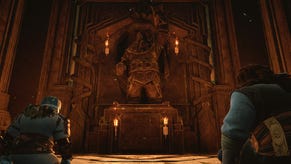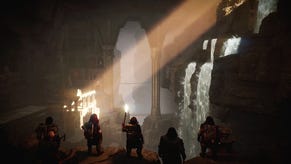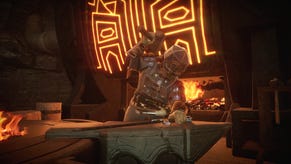The Lord Of The Rings: Return To Moria has a lot in common with Valheim and... PowerWash Simulator
Build stuff, sink pints, clean walls
Lord Of The Rings: Return To Moria is a survival game that certainly shares something in common with both Valheim and Deep Rock Galactic: you and a few buds sink pits and set out on expeditions to mine ore, batter monsters, and push further into the darkness. Having watched its game director Jon-Paul Dumont steer me through a 30-minute demo, I’ve come away with the impression it’s far more than just a cheap LOTR pretender. The game strikes me as a real competitor, with well thought out story beats and crafting treats to make Moria’s restoration a hearty adventure… or, if you'd prefer, the equivalent of a Powerwash Simulator.
Moria’s played in third-person, with a camera set behind your sturdy dwarf and a hotbar at the bottom of your screen showing off whatever minerals or picks you’ve got stowed in your bottomless pockets. It is - and I promise I’ll stop with the Valheim comparisons soon - very Valheim in its presentation. Where Moria differs to a massive degree is its story and in its setting. Dumont says they’ve done their utmost to make Moria feel like an authentic extension of J.R.R. Tolkien’s appendices, where Sauron has fallen, Aragorn’s king, and the Dwarves are working to retake their ancestral home.
For the demo we followed quest markers on an on-screen compass, and as we stepped into an iconic Dwarven tomb, Dumont explained that you’re able to tackle story quests in such a way that fans can actually retrace the Fellowship’s steps. Once you’re done with the story, you’ll still be able to explore freely in a sort of post-game, although Dumont is tightlipped on the secrets and other bits you might encounter here.
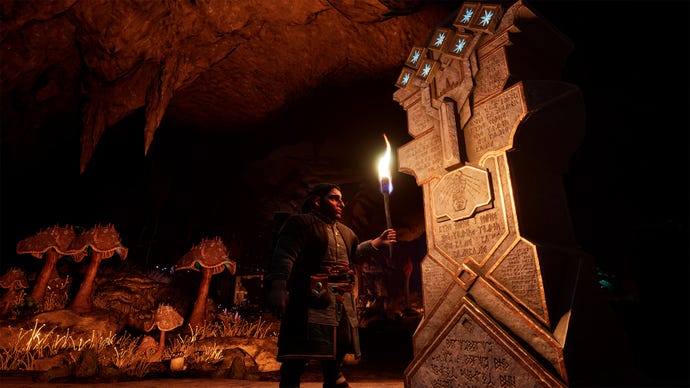
And unlike other survival games set in cosy forests with glistening seas stretching out into the distance, Moria is set in a variety of underground biomes where light and noise must be monitored closely. Spend too long in the dark and you’ll put yourself at risk of raising an “I’m getting scared”, risking madness and, presumably, a swift death. So long as you carry a torch you’ll be alright, but popping lanterns and hearths about are essential when building a proper home. Then there’s noise, marked by an orb that’ll pulse as you clank your pick into rocks or clatter your sword into the angry green fellas. Max it out and you’ll be swarmed by a band of orcs that’ll suddenly crawl out of the rockwork and attempt to cleave your braided hairs from your chinny chin chin.
Exploration down under seemed a bit Deep Rock Galactic, in that the minimap in the top left didn’t show the broad scope of a vast biome you’re free to tear down and traverse like an open world. Instead, maps seem to be a set of corridors with T-Junctions occasionally sprouting off them. And it’s at these junctions where you’ll be presented with a new pathway to crumble with your pick and see what procedurally generated mysteries lie on the other side. I’m told that most of the procedural offerings act as the glue between bespoke story areas set in a variety of biomes, so not all of Moria is left to the hand of fate.
I watched as Dumont demonstrated that not everything is dark in Moria, as we entered some church-like halls, with unnatural light spilling through huge glass windows. A troll took a swipe at us, but Dumont kited it into a beam of light, causing its body to contort into stone. Had it been night, we would’ve been in for a much tougher time, he said. Later, we travelled to Khazad Dum, the Dwarven capital. The scale of it wass quite something, as waterfalls cascaded down its center and orcs patrolled its winding stone steps. We did’t delve further for spoiler reasons, but these brief snippets of a land beyond rock tunnels have my hopes high that exploration won’t get stale quickly.
When it comes to crafting your own home, Moria seems rather accommodating with convenience being key. Dumont showed me a base he constructed from stone, bathed in the warm light of some lamps and torches. All of it’s easy to snap together, with a quick press of a button and with the classic rotating and snapping of templates. And as you venture between areas, you can not only make most spots a home by outfitting them with the likes of a door and a roof, you can fast travel between them all once you’ve got enough to build a magical portal.
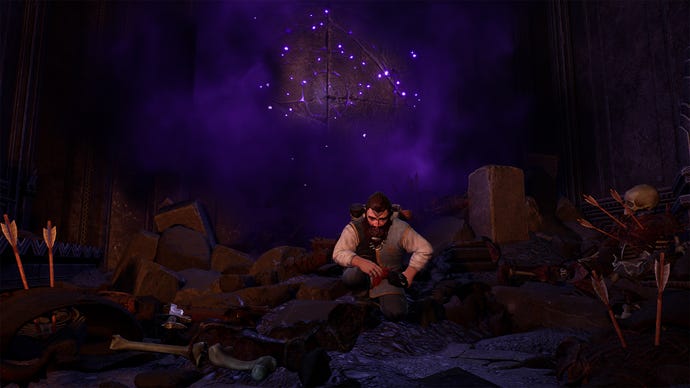


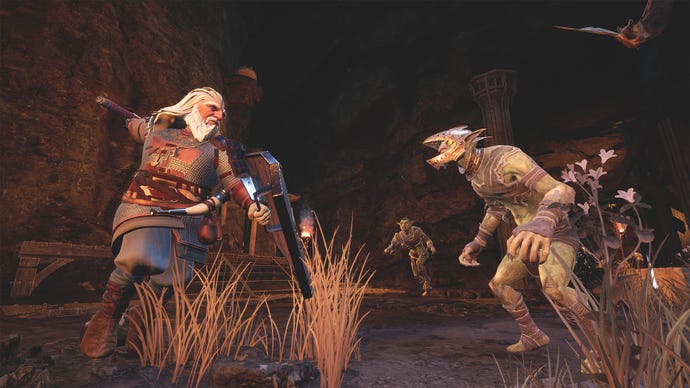
Dumont showed me his armour proudly displayed on racks and a modest treasure pile of coins dumped in a corner. Apparently, it’s a Dwarven trait to pile your wealth in a heap, and he’d hope players will build their own enormous vaults. Tables were laden with food for sit-down feasts with pals, or rations for trips away, and he built a tall brewer outside for all-important pre-expedition bevvy-related buffs. Players will apparently be able to build brewers so tall, they’ll practically need scaffolding to get up to them.
As my tour came to a close, Dumont repaired a wall with a hammer, upping its health percentage and transforming its appearance from a cracked, grimy slab to a shiny one. Dumont and the other devs in the room laughed about how it's an inevitability that some players will take it upon themselves to restore all of the infrastructure Moria has to offer, a bit like a Dwarven PowerWash Simulator without the powerwashing bit.
What I saw of Lord Of The Rings: Return To Moria was a pleasant surprise in the sense it seemed like a survival game with well thought out building options and exciting exploration, not some slightly tacky movie tie-in. It also wasn’t surprising, in the sense its presentation was highly reminiscent of Valheim. Comparisons aside, though, I could totally see Moria turning into the next co-op survival hit for those seeking more of a story focus to their mining escapades.
For more of the latest news and previews from Gamescom 2023, head to our Gamescom 2023 hub. You can also find everything announced at Opening Night Live right here.




